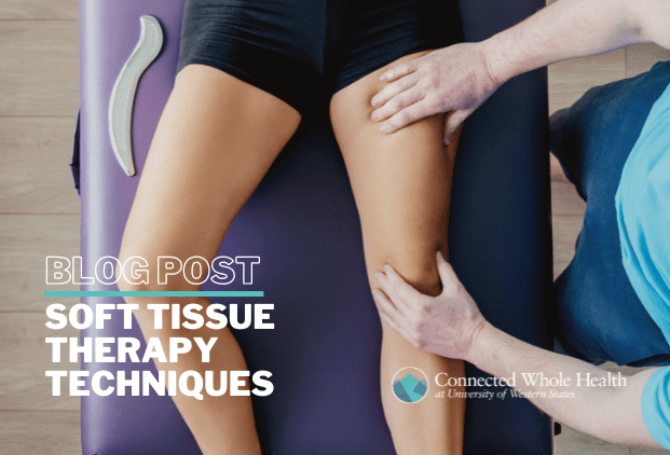
December 15, 2022
Soft tissue therapy reduces tensile and compressive stress on your body and can dramatically speed up the healing process.
Soft tissue refers to the type of body structures targeted in a treatment session.
Soft Tissue therapy is effective in treating:
- Plantar fasciitis
- Headaches
- Upper back pain and tension
- Tennis elbow
- Neck pain and stiffness
- Lower back pain
- Post-operation rehab
- Postural issues associated with desk-based occupations
- Shoulder protraction (slouching)
- Face tension and associated eye pain
- Arthritis
Soft Tissue Therapy Techniques
Our doctors are experts at applying the following techniques.
Soft Tissue Release (STR)
Method: Pressure is applied on your affected muscle to create a temporary attachment point, then moved into a pain-free stretch.
Purpose: Reduce pain.
Technique: STR targets specific areas of tension within a muscle, making it helpful in targeting muscles that are difficult to stretch and isolating a muscle within a group of muscles that would usually stretch together.
Post-isometric relaxation (PIR)
Method: This technique effectively treats tight hamstrings, which often contribute to back pain.
Purpose: Treat muscle spasms.
Technique: Our doctor will gently stretch your hamstrings passively, to the point of first resistance, so you should only feel a very mild stretch, if at all. You would then resist the doctor’s push very lightly – with about 10-20% of your force, for 10 seconds. You would then relax, and I would use this to gently stretch your hamstring further until the next point of resistance. We would repeat this together 3 to 5 times.
Myofascial Release (MFR)
Method Fascia is a connective tissue that wraps around and in between every structure in our body, including our muscles – it is very thin and elastic but tough.
Purpose: Reduces fascia tension.
Technique: Our doctors apply sustained and gentle pressure into the problem fascia. This can take a long time, up to 15 minutes, in one area alone.
Trigger Point Therapy (TPT)
A trigger point may be that area you refer to as a ‘knot.’
Method: TPT is not relaxing, but it is very effective. A trigger point is an area that, when pressed on, causes pain somewhere else – for instance, a TP on your shoulder may transfer pain up your neck and into your head, like a tension headache.
Technique: Our doctors apply specific and direct pressure onto your trigger point with my thumb or a tool.
Purpose: Reduces shoulder & neck pain.
There are many more techniques that can be utilized. Schedule a visit with Connected Whole Health and experience the difference.
✒️ Chief Editor: Dr. Bill Moreau | DC, DACBSP, FACSM | Chief Medical Officer
